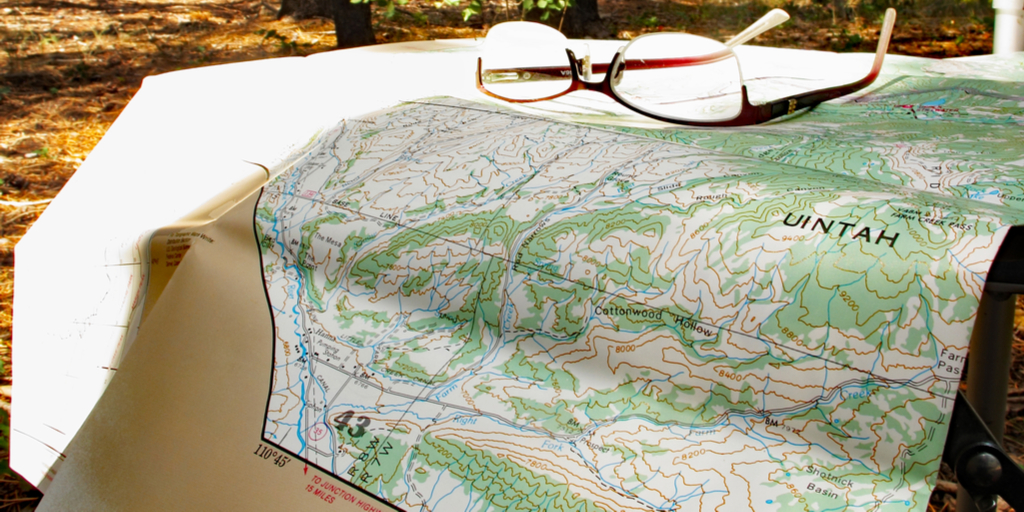Assumptions in Economics Are Like Maps
Critics of mainstream economics often style the implications of behavioral economics as something much bigger than they are. A big part of the problem is that these critics misunderstand the assumptions economists and rational choice scholars make as assertions of human ontology when they really are only assumptions of convenience.
Consider standard utility functions in economics. Economists actually interested in economic behavior, supply and demand, etc., often enter only regular goods and services, products people eat and use. Hence the criticism, as made by Antara Haldar in a recent article in The Atlantic that economic models represent people as solely “materialistic.”
The thing is, economists know that people have lots of preferences over immaterial, even spiritual, goods as well as material goods. But most economists are substantively interested in economic behavior, like what happens at the grocery store. So they assume away preferences likely having little impact on the decision whether to buy a loaf of bread or not. They do this not as an implicit ontological assertion that man does indeed live by bread alone. Rather they do it to make their analysis tractable; they need to simplify by assuming away irrelevant details so they can say something interesting regarding consumer demand for bread.
To be sure, assumptions that actually assume away details affecting what interests economists are poor assumptions. Assuming away relevant details means economists (and scientists more generally) will make the wrong explanation or prediction. But cluttering up a model with variables that do not affect the part of behavior that interests the economist unnecessarily makes the analysis more difficult.
Economists and rational choice scholars more generally get criticized for modeling in ways that ordinary people understand innately and use every day. Consider the models people develop and use when they want to understand how to drive from point A to point B. The models people use to do this are called maps. Maps are highly stylized, unrealistic models of real topography. But that’s the virtue of the map, or model, not its vice. On the one hand, if in the name of “realism” a map included more details about the landscape between point A and point B than a person needs to understand in order to drive between the two points, then it might be too cluttered actually to use, or might require so a large piece of paper that it couldn’t be used conveniently or, when folded up, it couldn’t fit into the glove compartment.
On the other hand, if the map includes too few details—if it assumes away too much that is pertinent for traveling from point A to point B—then it’s also useless. Handing me a globe of the world when I want to drive from Dallas to College Station doesn’t help me.
The trick is to have a map that provides just enough detail to let me get from point A to point B without confusing me with superfluous details and without omitting important details. This is often as much an aesthetic decision as it is a substantive one. Nonetheless, what’s on the map won’t ever look “realistic.” But that unrealism is precisely what makes it useful.
What one might find useful on a map will also differ depending on how one wants to move between the two points. The details one needs if hiking from point A to point B differ from the details one needs if driving the distance, and differ from what one needs if flying the distance.
This is just as true for economic models. If one is interested in how much bread people will buy at the grocery store, it usually makes sense to assume away the political and religious preferences of consumers. This is not an implicit assertion that humans only value bread and have no political or religious preferences, it’s only a convenience: For most purposes those preferences will not normally affect the purchase decision that interests the economist. On the other hand, if an economist is interested in studying consumer purchases of, say, specialty breads it’s possible that political or religious preferences might matter in that decision, so it would be unwise to abstract from it. Say, whether the wheat is grown by local farmers, or whether it’s going to be used for communion at a church. Hiking, driving, or flying.
So, too, with teaching economics, or teaching rational choice models of politics or sociology. Haldar takes economics to task because behavioral economics isn’t taught in introductory economics classes. But in economics as in other subjects one must learn to walk before one can run. When one teaches a toddler to walk one does not implicitly assert that running does not exist or is unimportant.
Realizing all of this, however, does not hand carte blanche to anyone who developed an economic model of this or that. As with any model the question is this: are the assumptions appropriate to illuminate the phenomenon under study (and is the phenomenon itself of interest)? Or do the assumptions assume away pertinent parts of the puzzle; do they fail to assume away only irrelevant parts of the puzzle? Many not particularly illuminating models exist. But, as with scientific models more generally, that economic models are unrealistic is their strength, not their weakness.
